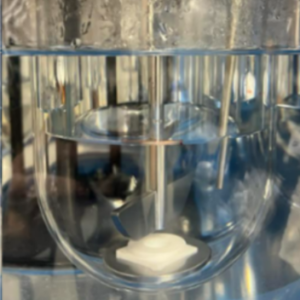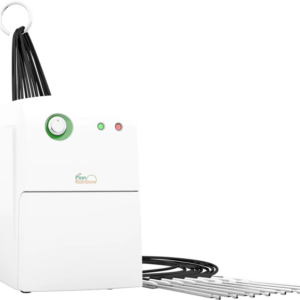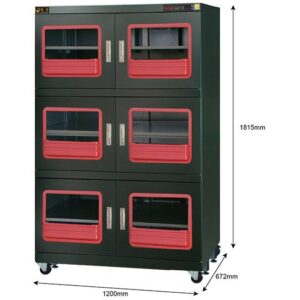Rainbow R6 in-situ UV/Vis Spectrophotometer for Dissolution Concentration Monitor – PION
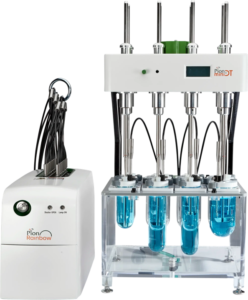
An in vitro analytical platform for dissolution and flux measurements of whole dose formulations using biorelevant volumes.
The Rainbow R6 Concentration Monitor is an in-situ Fiber Optic UV-VIS spectrometer with a Deuterium lamp light source and photodiode array detection. It is a powerful analytical instrument that correctly and accurately
measures dissolution in real-time.
Equipped with up to 8 independent fiber-optic channels the Rainbow R6 provides high accuracy and repeatability in concentration measurements.
- No delays between sample draw and analysis – the Rainbow R6 provides concentration measurement
in real-time. - Provides rich data for very short sampling intervals needed for immediate release formulations – sample
measurement can be obtained in less than 5 seconds in an 8-vessel dissolution tester. - Unattended, extended assays are possible as concentration measurement is made directly in assay media.
The Rainbow R6 Concentration Monitor is used for early phase compound screening, pre-formulation and formulation studies, and quality control.
- Dissolution profiles and absorption prediction studies with limited or high potency API or biorelevant volumes
- Analytical R&D and QC for compendial dissolution testing when used with Pion’s DissoPRO software
- FLUX systems help simultaneously determine the effect of formulation on dissolution, solubility and permeability of API.
Software for the Rainbow R6
AuPRO software for Rainbow for data collection and refinement in research and development:
A powerful analytical software designed specifically for the needs of early-stage compound screening, and during pre-formulation and formulation development.
DissoPRO software for Rainbow for method development and quality control (QC)
A secure, traceable software package designed to address the needs of dissolution scientists and quality groups in highly regulated environments.
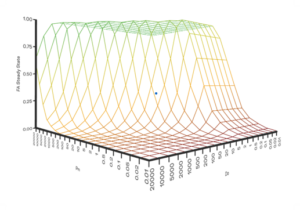
Pion’s Predictor Software applies the mechanisms of the Gastrointestinal Unified Theoretical (GUT) framework to convert in vitro flux data to predictions of in vivo oral absorption and percent fraction drug absorbed (Fa%). When you apply Predictor software to flux data collected by Pion’s Rainbow Dynamic Dissolution Monitoring system, the Predictor data can help you understand the interplay between dose (Do), dissolution (Dn,) and permeability (Pn) to help you understand where to target formulation improvements.
Predictor assigns an estimation of the rate-limiting step to absorption of the API based on the Do, Dn and Pn numbers calculated from the Fa% and defines whether the compound is subject to a permeability, dissolution, or solubility-permeability limitation.
Additionally, Predictor is able to classify the drug according to the Biopharmaceutics Classification System (BCS) based on the Do and Pn numbers determined from the Fa% result. Formulation scientists can then decide on a strategy for improving oral absorption outcome by overcoming the significant rate-limiting steps for their drug.
Product Configurations
- The MicroDISS system consists of an R6 and a low volume dissolution bath for dissolution monitoring where only small quantities of API are available. It allows testing in media volumes as low as 2 mL to 20 mL.
- The MiniDISS system consists of an R6 and a miniDT small volume tester for biorelevant dissolution testing and is available with100, 200 and 250 mL vessels.
- The MicroFLUX system consists of an R6 and a lowvolume mini-bath with the addition of low-volume FLUX vessels requiring only 20 mL of media for FLUX experiments where only small sample amounts are
available. - The MacroFLUX system consists of an R6 coupled with a compendial dissolution apparatus and submerging Flux acceptor chambers. The macroFLUX technology is compatible with various Compendial dissolution baths available in the market.
- The BioFLUX system consists of an R6 coupled with a compendial dissolution apparatus with 500 mL vessel and submerging Flux acceptor chambers allowing biorelevant volumes on the donor side.
- The miniFlux system consists of the R6 coupled with the miniDT 250 mL volume dissolution bath and a
submerging acceptor chamber. The miniFlux system allows to run flux assays with various biorelevant volumes including 250 mL and 130 mL on the donor side. - The Scissor N3 (or N6) is compatible for use with Rainbow R6 for in-situ concentration monitoring with the Scissor subcutaneous injection site simulator.

REQUIRED ACCESSORIES:
- PC or laptop with Windows 10 or 11, 64-bit operating system and minimum 2.3 GHz microprocessor, 8 GB
RAM, 10 GB of free disk space (500 GB or higher storage recommended), one free USB port, and
Microsoft Excel for data export - AuPRO Version 7 data acquisition and processing software
- Windows “Memory Integrity” disabled (usually disabled by default as it interferes with many device
drivers)
TECHNICAL SPECIFICATIONS:
- Light Source: Deuterium
- Optimal wavelength range of Deuterium lamp: 240-500 nm
- Baseline flatness </= 0.002 AU within the range 240–600 nm
- Noise </= 0.002 AU at 600 nm
- Stability </= 0.002 AU at 270 nm
- Stray light </= 1%
- Wavelength accuracy in UV region ±1 nm, in visible region ±2nm.
- Absorbance Range: up to 2 AU
- Minimum Sampling Interval: 2 seconds
OPTIONAL ACCESSORIES:
- The IDR press accessory is used with MicroDISS applications. It compresses powder to produce tablets
of consistent surface to deliver replicable results for intrinsic dissolution measurements. - Vessel covers are available with ports for fiber optic probe insertion for FLUX applications
- Baths and heater circulators are available for all Pion Dissolution Testers
- Standardization stations are used to collect blank (100% transmittance) and standard spectra. They are available for straight dip probes, J-probes and MacroFLUX probes.
PROBES:
- Rainbow R6 instruments are supplied with one fiber optic straight probe and 3 interchangeable probe tips
(2,5,10 mm path length) for every channel. Optional probe configurations include additional tips of 1- and
20-mm path length. - J-probes which use the same interchangeable probe tips.
- Fixed path length angled probes used primarily for MacroFLUX.
- Scissor Fiber Optics Probe which is a fixed path length straight probe used for analysis in the Scissor N3.

Additional Benefits
- 5 different advanced mathematical approaches to deal with turbidity or other disturbances in the spectrum, making in situ monitoring work
- Its Green. No filters, HPLC vials, columns or eluents. Everything is done in your experiment vessel
- Direct measurements in complex or biorelevant media, even with media conversion is possible in small, biorelevant or USP volume
- No separation is needed. Multiple mathematical ways to measure 2-3(-4) absorbing components in the vessel, all in real time



